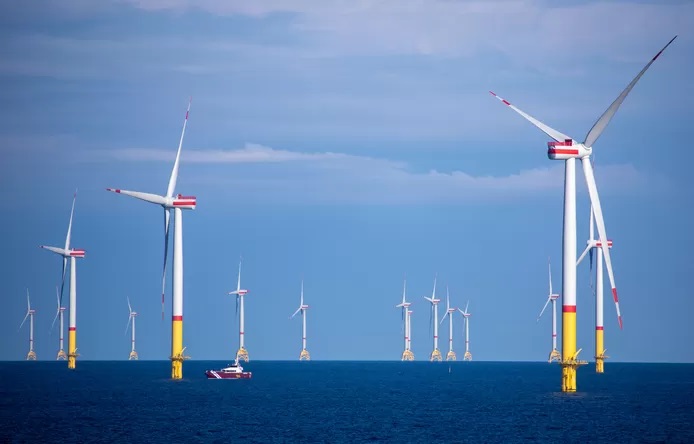Belgium and Denmark are to cooperate on the laying of a cable 500km long to allow the two countries to share in each other’s wind energy.
The deal was announced yesterday by federal energy minister Tinne Van der Straeten (Groen) while taking part via internet link in an event named "Davos Energy Week".
The idea was Van der Straeten’s own initiative, who went on to approach her Danish counterpart Dan Jørgensen. The two ministers will soon sign a memorandum of understanding.
But the Belgo-Danish cable is just the latest stage in an undersea energy network that has been growing piecemeal since 2018, when a cable between Belgium and the UK came online. That was followed in November last year by a link joining Belgian and German networks.
The 500km cable from Belgium to Denmark, however, is of another order.
“This will be a hybrid project, where electricity can flow in both directions, also connecting the wind farms of both countries,” Van der Straeten said.
“The advantage for our country is that we get access to cheap Danish wind energy. Denmark is world champion for offshore wind energy and Belgium the European number four. Since Denmark has surpluses, and Belgium is reaching its limits due to lack of space, such connections are necessary to achieve our climate goals and also to be able to continue to export our country's know-how.”
The first step in the memorandum of understanding will be the commissioning of a feasibility study to determine whether the project is technically and financially viable. For comparison, the UK-Belgium link cost €450 million for 140km. A 500km cable with the desired capacity of 1-1.5Gw would cost several times more.
The question is: will the savings on ‘cheap Danish wind energy’ be enough to offset the huge cost of the cable?
Technically, the project should not present any extraordinary problems.
“There are already connections of that distance in existence,” a spokesperson for Van der Straeten said.
“There has been an interconnector between the Netherlands and Norway since 2008, and one between France and Ireland will open in 2025. Moreover, offshore wind is the cheapest form of energy, after onshore wind. And because the electricity can flow in both directions, the aim is to achieve a utilisation rate of 80-90%, which reduces the social costs.”
On the line to Davos, Van der Straeten stressed the project was one for the long-term.
“This project is not for tomorrow, but you have to dare to look ahead. If we want to ensure supply in 2030 as well as obtaining 100% renewable energy by 2050, then we must start today. This project is an important piece of the puzzle and will in time enable us to evolve towards a fully integrated European offshore grid,” she said.
Meanwhile Elia, operator of the high-voltage grid, supported the idea.
“Interesting,” a spokesperson said. “With this type of project, our energy-intensive economy gains access to bulk renewable energy. It is also fully in line with Elia's mission to realise the country’s energy transition.”
Alan Hope
The Brussels Times

